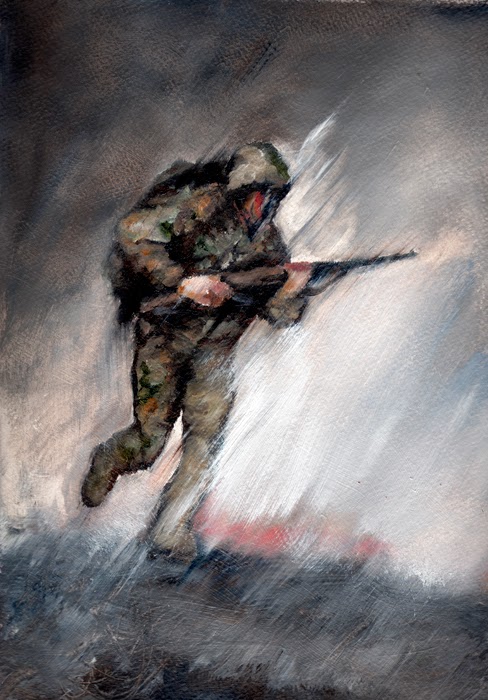Honor Memorial Day
Over a million Americans have died in our nation’s wars. Memorial
Day is a day of remembrance for ALL of our Soldiers. For those who fought to
win us our independence, to those who fought to unite us as one nation, to
those who fought in wars that they didn’t agree with. I thank my bother,
cousins, uncles, and all my family who have and still do defend our country.
Here are a few of my military paintings that I have created
showing our soldiers in the trenches. Some of these oil paintings I created for
books, but most were personal images that I created showing the faces of war
and the brave decisions our soldiers make to survive.
I think General Logan said it the best when he started the
first Memorial Day after the Civil War. Gen. Logan’s order for his posts to
decorate graves in 1868 “with the choicest flowers of springtime” urged: “We
should guard their graves with sacred vigilance. ... Let pleasant paths invite
the coming and going of reverent visitors and fond mourners. Let no neglect, no
ravages of time, testify to the present or to the coming generations that we
have forgotten as a people the cost of a free and undivided republic.”
Caniglia










